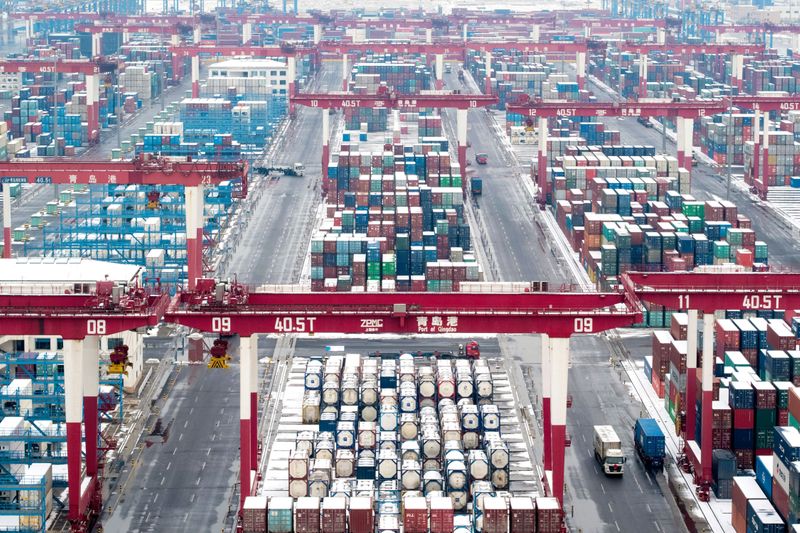BEIJING (Reuters) - China's exports are expected to have dipped in July as a surge in global coronavirus infections depressed demand, while growth in imports likely cooled, a Reuters poll showed on Wednesday.
Trade weakness will add to concerns whether the ongoing recovery momentum in the world's second-largest economy can be sustained even as domestic demand continues to improve on the back of government stimulus.
Exports in July are expected to have contracted 0.2% from a year earlier, according to a median estimate of a Reuters poll of 28 economists, compared with an increase of 0.5% in June.
Imports likely rose 1.0% on year, the poll showed, easing from a gain of 2.7% the previous month, due to a high base last year and the reimposition of lockdown measures in some overseas economies which hampered the flow of goods, analysts said.
Both official and private surveys on manufacturing activity showed new export orders for Chinese factories in July still mired in contraction after the pandemic shattered global demand, although overall activity expanded at a faster clip due to improving domestic demand.
China's export performance, boosted by record shipments of medical supplies and robust demand for electronic products, has not been as severely affected by the global slowdown as some analysts had feared, but analysts believe weak orders are set to weigh on its manufacturers in the coming quarters.
Specifically, the weakness in July spot prices for dynamic random access memory (DRAM), a type of random access semi-conductor memory, points to weaker export growth in automatic data-processing equipment and components for mainly computers or laptops, Nomura analysts said in a note.
"This suggests the decent demand for work-from-home electronic products including computers, might have started to lose some steam," said Nomura.
Indeed, cargo throughput for foreign trade at major Chinese ports dropped 1.2% on year in the last 10 days of July, reversing from the positive gains recorded in the first 20 days, China Ports & Harbours Association said in a statement on Tuesday.
Trade frictions with the United States are also set to hurt bilateral trade, the association said, adding the United States resumed collecting an additional tariff of 25% on 55 Chinese goods from July 31.
With heightened risks from U.S. hostility and the coronavirus pandemic, government advisers have told Reuters China is looking to reduce its reliance on overseas markets and technology for its economic development.
China bought only 5% of the targeted purchases in energy products from the United States in the first half of 2020, falling well short of its U.S. trade deal commitments. It will need to step up buying of commodities if it is to meet an ambitious $36.5 billion target for Chinese imports of U.S. farm goods this year.

Senior U.S. and Chinese officials will review the implementation of their Phase 1 trade deal during an Aug. 15 video conference.